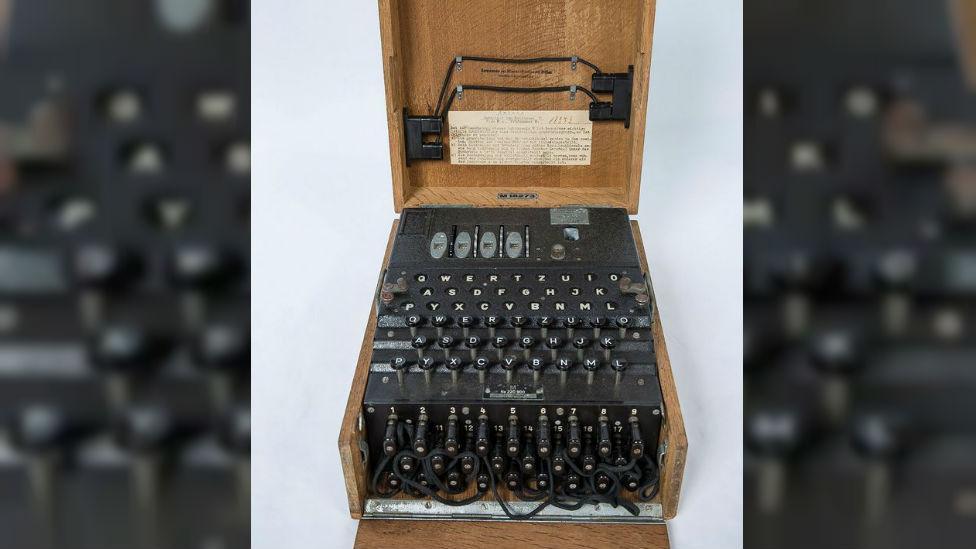Alan Turing school report in Cambridge codebreaker exhibition
- Published

Alan Turing's work helped Allied efforts to read secret German messages sent by their Enigma machines
A school report stating World War Two codebreaker Alan Turing needed to buck up his ideas if he wanted to get into Cambridge University is going on public display for the first time.
Turing's report from Sherborne School in Dorset warns: "He must remember that Cambridge will want sound knowledge rather than vague ideas."
It forms part of a new Codebreakers and Groundbreakers exhibition at Cambridge's Fitzwilliam Museum.
The exhibition opens on Tuesday.
The 1929 report from the school which Turing attended from the age of 13 is on show alongside other personal items.
His French teacher wrote that the boy's "proses have been very weak" and that he made "elementary" mistakes as a result of "hasty work".

Turing's report from 1929 says the would-be mathematician was "coming out of his shell"
His physics teacher was similarly unimpressed by his pupil, saying that although Turing had "done some good work", he "sets it down badly".
That same teacher warned the boy that Cambridge University would require "sound knowledge".
Other items on show including letters Turing wrote to his mother while at Bletchley Park, and a teaspoon she took from his laboratory shortly after his death.

Turing's mother believed her son intended to gold-plate this spoon in his laboratory using cyanide of potassium
But perhaps the most poignant exhibit is a book Turing chose after winning a prize set up in honour of the boy believed to have been his first love.
Christopher Morcom's parents established the Christopher Morcom Science Prize after their son's death at the age of 18.
Turing was the first recipient of the prize, and chose a book - Mathematical Recreations and Essays by W. W. Rouse Ball - a Fellow of Trinity College, where Morcom was to have taken a place had he lived.

Turing chose this book after winning a prize named in honour of his friend Christopher Morcom
The exhibition also features a rarely-seen 1944 U-Boat Enigma M4, used by the German Navy to disseminate secret communications to and from German Atlantic U-boats, and a British Typex Mk 22, a device used by the UK for exchanging secret messages at the highest level - which the Germans never managed to decipher.

The Government Communications Headquarters (GCHQ) has loaned the rare 1944 U-Boat Enigma M4 machine to the museum
Codebreakers and Groundbreakers: From breaking the Enigma Codes to the Decipherment of Linear B opens on 24 October and runs until 4 February.
- Published19 October 2017

- Published29 August 2017

- Published17 January 2017

- Published20 October 2016

- Published23 September 2016
